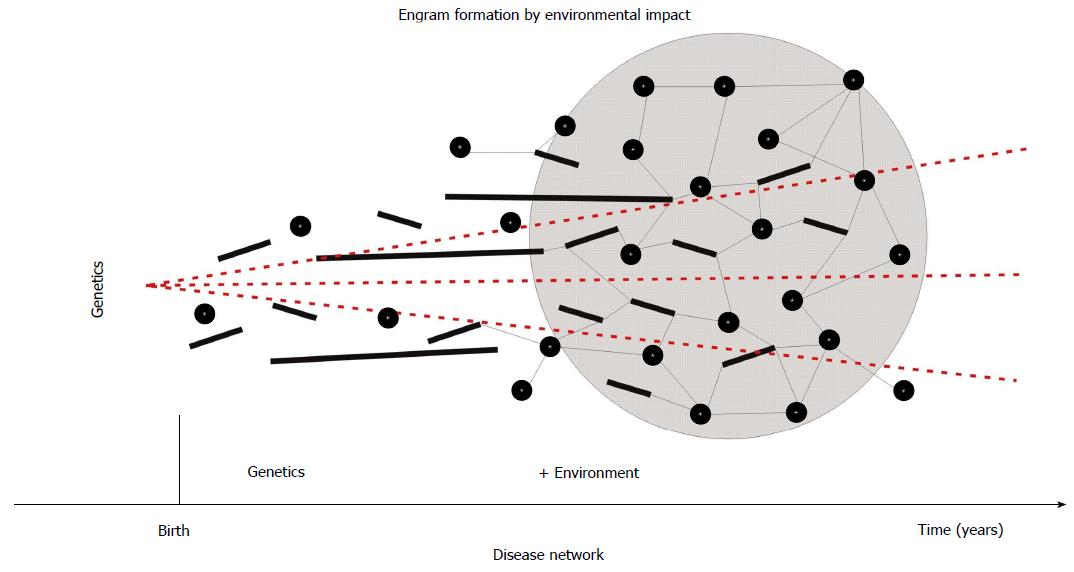Copyright
©The Author(s) 2016.
World J Psychiatr. Mar 22, 2016; 6(1): 66-83
Published online Mar 22, 2016. doi: 10.5498/wjp.v6.i1.66
Published online Mar 22, 2016. doi: 10.5498/wjp.v6.i1.66
Figure 1 Theoretical formation of a disease network in human brain.
Short-term (e.g., traumatic = circles), medium-term (short bars), and long-term (e.g., family = long bars) adverse impact emboss molecular engrams that eventually synergize to form a disease module or network (as shown by connections between nodes). Because the development of the human brain occurs predominantly postnatally, these environmental (epigenetic) influences appear to have more importance than the underlying genetic vulnerability (dashed lines).
- Citation: Gebicke-Haerter PJ. Systems psychopharmacology: A network approach to developing novel therapies. World J Psychiatr 2016; 6(1): 66-83
- URL: https://www.wjgnet.com/2220-3206/full/v6/i1/66.htm
- DOI: https://dx.doi.org/10.5498/wjp.v6.i1.66









